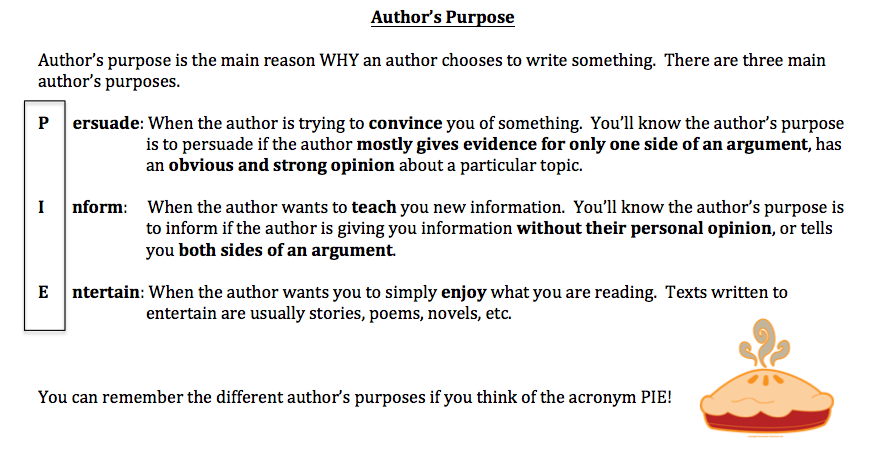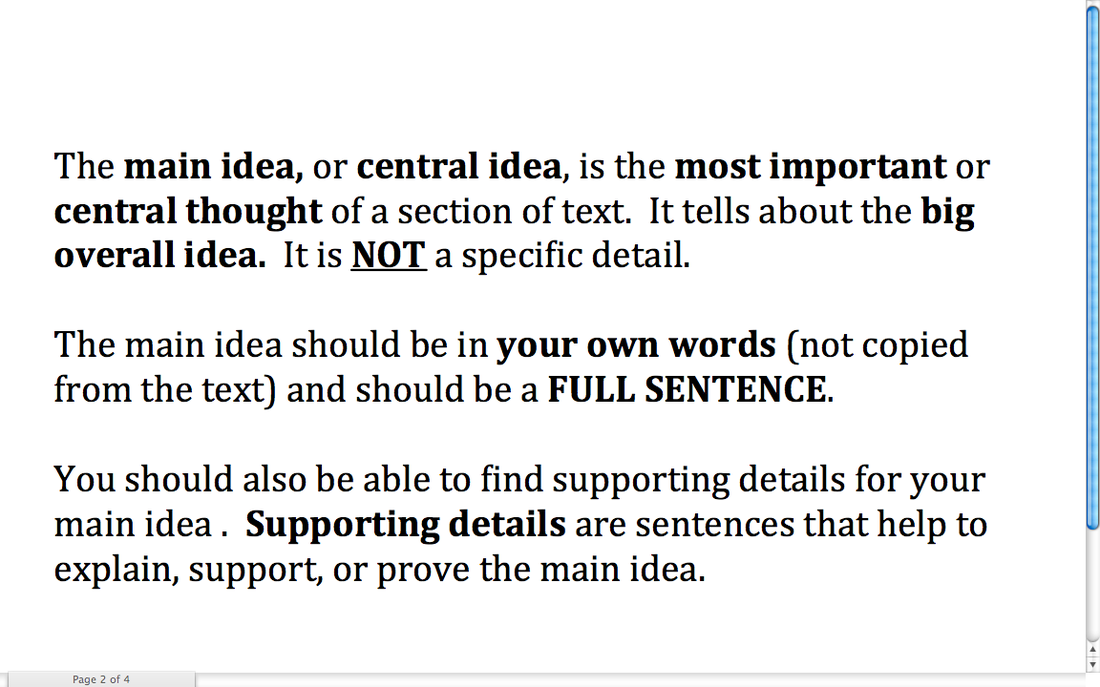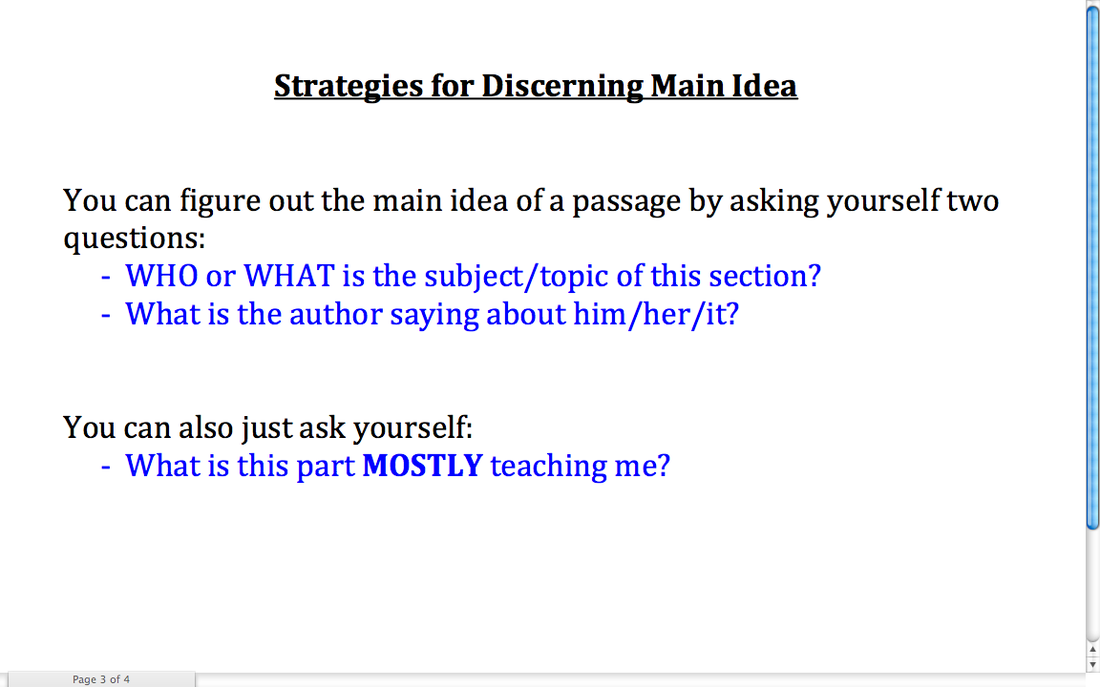nonfiction reading strategies
BEFORE Reading
- PREVIEW the features of the text (e.g. titles, subtitles, pictures, captions, source)
- PREDICT what it will be about
- Call to mind your PRIOR KNOWLEDGE of the topic
DURING Reading
- CHUNK the text (think about which paragraphs have ideas that are related to one another)
- ANNOTATE (add notes to) the text with your reactions or questions, summarize chunks briefly, highlight important information, etc.)
- RE-READ parts that you don't understand
AFTER Reading
REFLECT on the author's intentions. Ask yourself:
- What is the author's purpose? (Persuade, inform, entertain) How do you know?
- What is the author's point of view/opinion about the topic?
- What is the article trying to show me or teach me?
identifying author's purpose
identifying main idea
Look at the second page on the document below for an example of how to use this strategy:
Your browser does not support viewing this document. Click here to download the document.
identifying text structures
Click on the slides below to see different examples of structures authors use when writing nonfiction.
nonfiction authors use techniques such as...
- Visuals (cover page) & sidebar
- Comparing and contrasting
- Text structure (e.g. problem-solution, cause-effect)
- Giving historical context
- Use of data, facts, and statistics
- Asking questions
- Addressing the reader directly
- Description
- Using anecdotes
- Use of heading and subheadings
- Repetition
- Comparing and contrasting
- Text structure (e.g. problem-solution, cause-effect)
- Giving historical context
- Use of data, facts, and statistics
- Asking questions
- Addressing the reader directly
- Description
- Using anecdotes
- Use of heading and subheadings
- Repetition



